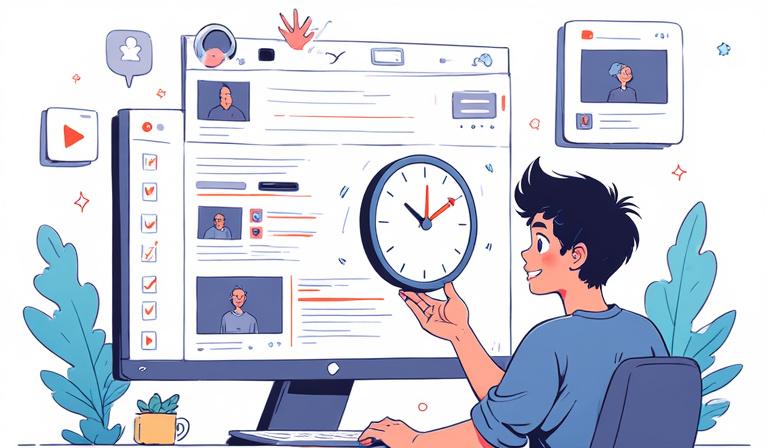Understanding when to upload your YouTube videos can be the difference between viral success and getting lost in the digital void. With over 500 hours of content uploaded every minute to YouTube, timing isn't just important—it's crucial. In my experience working with content creators, I've seen how strategic posting times can dramatically impact video performance.
The success of your YouTube channel isn't just about creating great content; it's about ensuring your audience is there to watch it when it goes live. Think of it like premiere night at the movies—you want a full house when the curtains open. Recent studies show that videos posted at optimal times can receive up to 3 times more views than those posted during off-peak hours.
Understanding YouTube Analytics
Before diving into specific posting times, you need to become familiar with your channel's analytics. YouTube provides a powerful suite of tools that can help you understand when your specific audience is most active. I regularly check my channel's analytics dashboard to track viewer behavior patterns.
The Analytics dashboard shows crucial metrics like watch time, audience demographics, and peak viewing hours. To access these insights, simply navigate to YouTube Studio and click on the Analytics tab. Pay special attention to the "When your viewers are on YouTube" chart—it's your secret weapon for timing optimization.

Key Metrics to Monitor
Watch time has become the holy grail of YouTube metrics. It's not just about views anymore—YouTube's algorithm favors videos that keep viewers engaged longer. I've found that understanding when your audience has the time and intention to watch longer videos is crucial for maximizing this metric.
The Science Behind Posting Times
Research consistently shows that certain times of day yield better engagement rates than others. Based on extensive data analysis, weekday uploads between 2 PM and 4 PM in your target audience's time zone tend to perform well. This timing catches people during their afternoon slump when they're more likely to take a YouTube break.
Weekend patterns tell a different story. Unlike other social platforms, YouTube actually sees higher engagement rates on weekends, particularly between 10 AM and 11 AM. I've personally seen a 20-30% increase in initial view counts when posting during these weekend sweet spots.
Factors Influencing Optimal Posting Times
Your ideal posting schedule should take multiple factors into account. First, consider your audience demographics. Are they students, working professionals, or perhaps stay-at-home parents? Each group has distinct viewing patterns that should influence your posting strategy.
Content type also plays a crucial role. Educational content often performs better during weekday mornings and afternoons, while entertainment-focused videos see higher engagement during evenings and weekends. I always adjust my posting schedule based on the type of content I'm sharing.

Experimenting and Tracking Results
The most effective way to find your optimal posting time is through systematic testing. I recommend creating a content calendar that experiments with different posting times over at least a month. Keep detailed records of how each video performs and look for patterns in engagement.
Several tools can help automate this process. TubeBuddy and VidIQ offer features that can track your video performance across different posting times. These insights are invaluable for fine-tuning your schedule.
Final Tips and Strategies
Consistency is key once you've found your optimal posting times. Your audience will come to expect new content at certain times, and maintaining this schedule helps build viewer habits. I've seen this strategy work particularly well when combined with cross-promotion on other social media platforms.
Community engagement also plays a crucial role. Respond to comments within the first few hours after posting—this signals to YouTube's algorithm that your video is generating meaningful interaction.
Conclusion
Finding the perfect posting time for your YouTube videos is an ongoing process that requires attention to data and willingness to experiment. While general guidelines suggest posting between 2 PM and 4 PM on weekdays or 10 AM to 11 AM on weekends, your optimal timing may differ based on your unique audience and content.
Remember, these timing strategies are just one piece of the YouTube success puzzle. Combine them with high-quality content, engaging thumbnails, and consistent audience interaction for the best results. Start testing different posting times today, and don't forget to track your results. Share your findings in the comments below, and subscribe for more YouTube growth tips!

